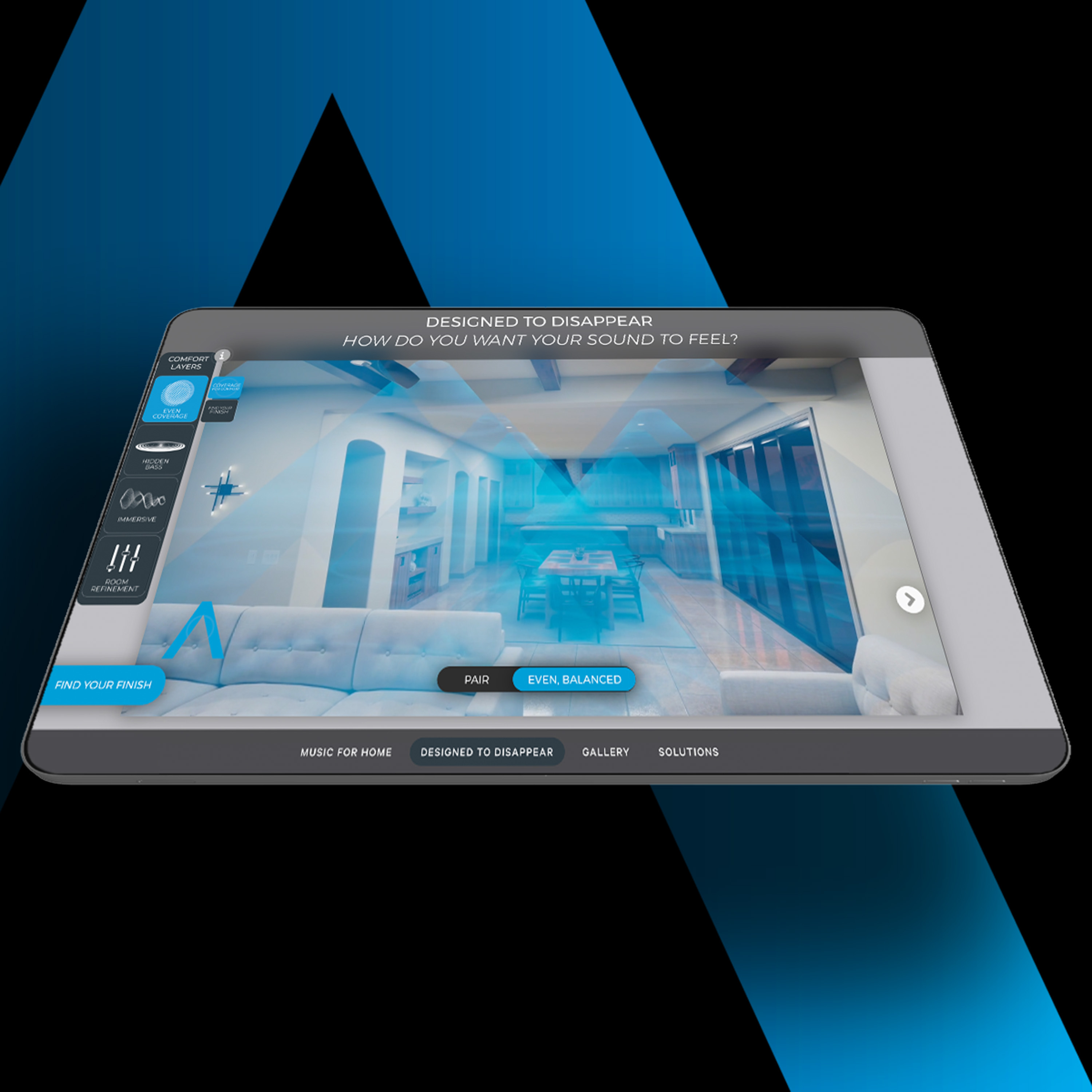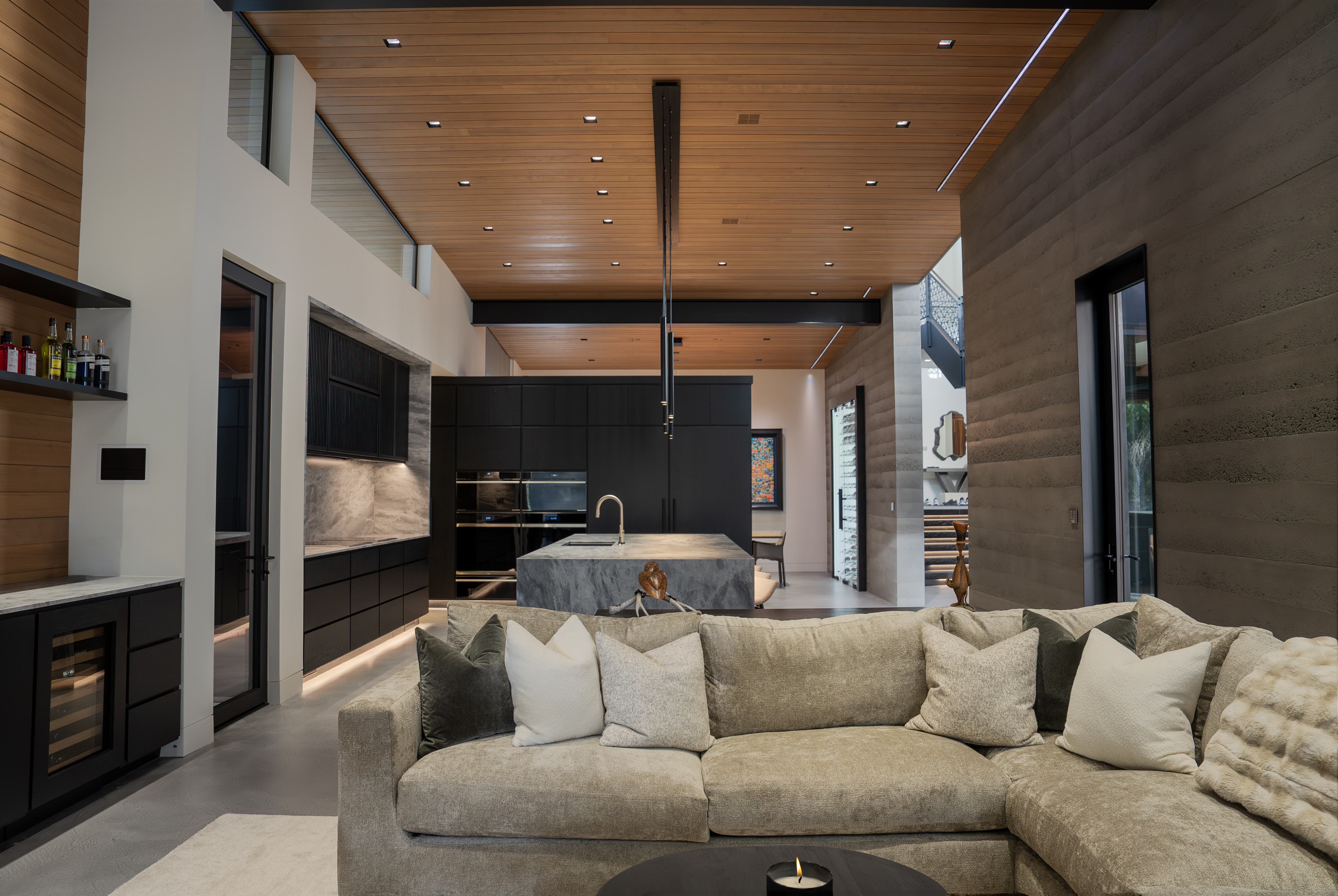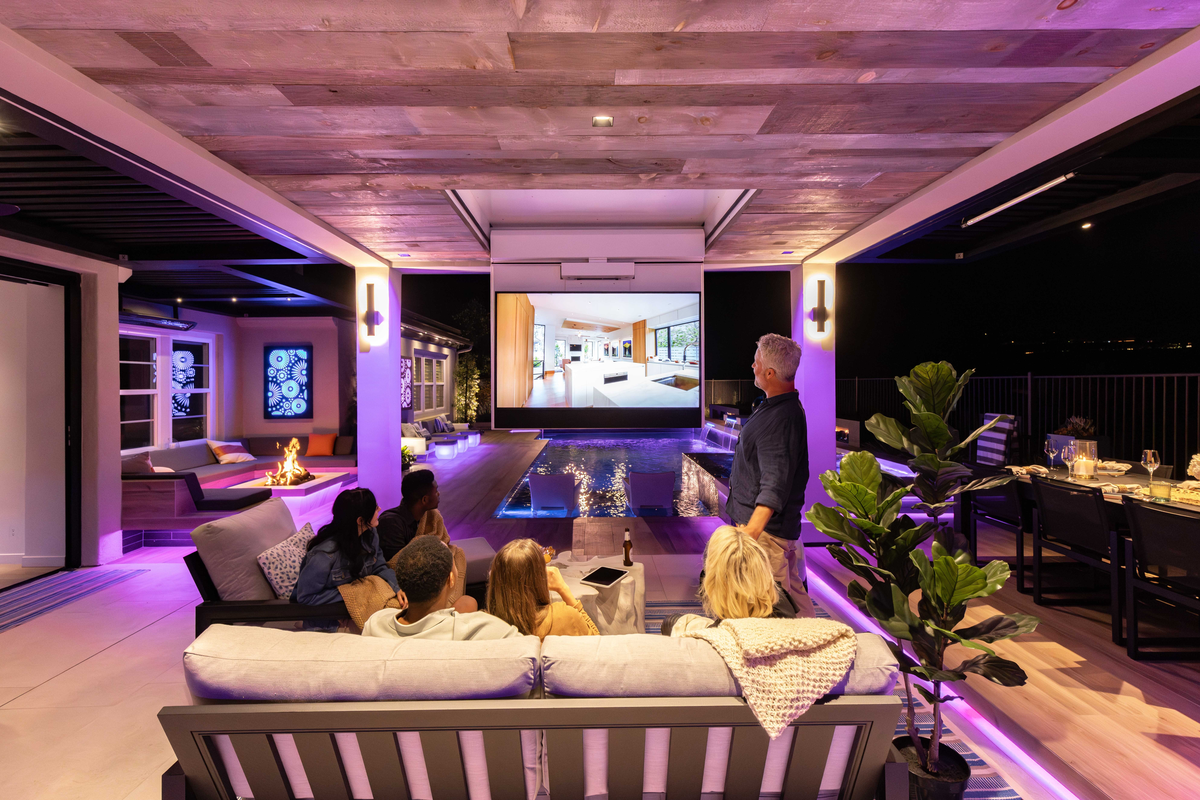
When clients invest in premium audio, they expect an experience that elevates their home without compromising its design. They want to be surrounded by music, not equipment, with sound that feels effortless and immersive.
This is the essence of the Sonance "Designed to Disappear" philosophy that extends far beyond concealing speakers in walls and ceilings. It's about honoring architecture and craftsmanship while delivering audio that becomes an invisible layer of the home itself.
True invisible audio requires a holistic approach that considers both the visual and sonic footprint of technology. Done executed properly, it creates moments so seamless that listeners forget they're experiencing reproduction at all.
For custom integrators, this approach provides a framework for delivering world-class experiences, exceeding client expectations, and standing apart in a competitive market.
The Sonance Philosophy: Invisible Audio, Effortless Design
At the heart of Sonance’s innovation is the belief that technology should enhance, not intrude upon, design. Invisible audio systems align perfectly with modern architectural principles — blending into walls, ceilings, and cabinetry while delivering natural, room-filling sound.
This balance of performance and design harmony defines what it means for technology to “disappear.”
The Four Layers of Invisible Audio Design - Even, Balanced Coverage: Eliminating the Sweet Spot
In traditional audio installations, sound often feels best in one narrow zone, the "sweet spot." This immediately draws attention to the technology as listeners become aware of speaker placement and room acoustics. The distraction interrupts the magic.
Sonance's approach is different. By designing for even, balanced coverage, every corner of the space feels as good as the center. Whether someone is seated at the kitchen island, gathered in the great room, or moving between spaces, the experience remains consistent, natural, and immersive.
Achieving this requires more than simply placing speakers in a grid. It demands thoughtful planning, understanding room architecture, controlling reflections, and leveraging dispersion patterns to create a soundstage that feels invisible. In a well-planned design, the result is audio that feels natural and enveloping rather than directional and obvious.
 Hidden Bass: Full-Range Impact Without Visual Compromise
Hidden Bass: Full-Range Impact Without Visual Compromise
Of all frequencies, bass presents the greatest challenge to the "Designed to Disappear" philosophy. Low frequencies demand power and presence, but traditional subwoofers rely on large enclosures that clash with refined interiors. The depth and impact of bass is imperative to the overall richness of the audio experience, yet visible bass solutions can be visually detrimental to interior aesthetics.
Sonance solves this with hidden bass strategies that integrate effortlessly into architecture. From in-wall systems with dedicated bass drivers to architectural subwoofers concealed within custom cabinetry. These solutions preserve the purity of design while delivering the emotional weight that only full-range audio can provide.
Immersive Channels: Beyond Stereo Boundaries
Immersive audio represents the pinnacle of the "Designed to Disappear" mantra. Offering experiences where sound feels as though it comes from the environment itself. This goes beyond traditional stereo to create an audio stage that transports listeners.
Strategic placement of speakers at varying heights throughout a space, much like accent lighting complementing main illumination, delivers audio that feels organic and unforced. The key is avoiding the "speaker in a box" effect where listeners can identify specific driver locations. Instead, sound should seem to float from walls, ceilings, and even empty space.
Room-Refining DSP: Technology That Adapts
Every room has its acoustic challenges. Whether it’s reflections, resonances, or frequency imbalances, all of these can make even the best speakers sound problematic. Room-refining DSP (digital signal processing) addresses these hindrances by adapting the audio system to work with the architecture rather than against it.
Through precise measurement and intelligent processing, DSP fine-tunes performance and ensures realistic, balanced, and transparent audio. The goal isn't to create a recording studio, but to optimize the listening experience for how the space will be used.
Advanced DSP analysis considers furniture, occupancy levels, and even seasonal changes that affect acoustics. The processing becomes part of the room's character rather than an obvious technological overlay. For integrators, it's the ultimate expression of audio invisibility—technology so adaptive it becomes part of the home’s architecture and lifestyle.
 The Business Advantage of Architectural Audio
The Business Advantage of Architectural Audio
For CI professionals, "Designed to Disappear" delivers more than technical excellence; it creates business opportunities. Clients increasingly expect technology that enhances their lifestyle without dominating their living spaces. This philosophy provides a framework to deliver exactly that.
Where many competitors lead with specifications and features, "Designed to Disappear" shifts the conversation to experiences. This positions integrators not as equipment installers, but as lifestyle consultants who design environments.
The business impact is clear. By focusing on integration and experience, dealers unlock premium pricing opportunities. Clients understand the value of solutions that integrate seamlessly into their lives and enhance their spaces without compromise.
Show and Sell Invisible Audio with the Sonance Design Gallery
Successfully implementing invisible audio design requires early collaboration between integrators, architects, and interior designers from project inception. By integrating audio considerations into space planning from the start, technology becomes an extension of the architecture, not an afterthought.
The ultimate measure of success is when clients stop talking about the technology and start talking about how much they enjoy their music. But helping clients envision these invisible solutions can be challenging. This is where the Sonance Design Gallery becomes an invaluable resource for dealers.
To help integrators communicate these possibilities, the Sonance Design Gallery serves as a visual and interactive resource. Rather than explaining abstract concepts, dealers can show clients exactly what even coverage, hidden bass, immersive channels, and room-refining DSP mean in practice.
Beyond defining each layer, the Design Gallery includes an extensive image gallery showcasing what's possible across various residential audio experiences. These real-world examples help clients visualize how invisible audio can enhance their specific living spaces while maintaining design integrity.
By shifting conversations from technical explanations to inspirational, design-driven storytelling, dealers can help customers visualize how invisible audio transforms their homes while preserving architectural integrity.
Getting Started: Elevate Clients’ Experiences Through Audio Invisibility
"Designed to Disappear" represents the evolution of luxury audio from a technology-focused to an experience-focused discipline. By mastering the four layers of audio architectural audio design, integrators can deliver solutions that exceed client expectations while building sustainable competitive advantages.
The Sonance Design Gallery is available to all authorized Sonance and James Loudspeaker dealers. Contact your Sonance representative to download the resource today and begin transforming your client conversations from equipment specs to seamless, invisible experiences that truly disappear into the home.


 Offers CEU Credits
Offers CEU Credits











